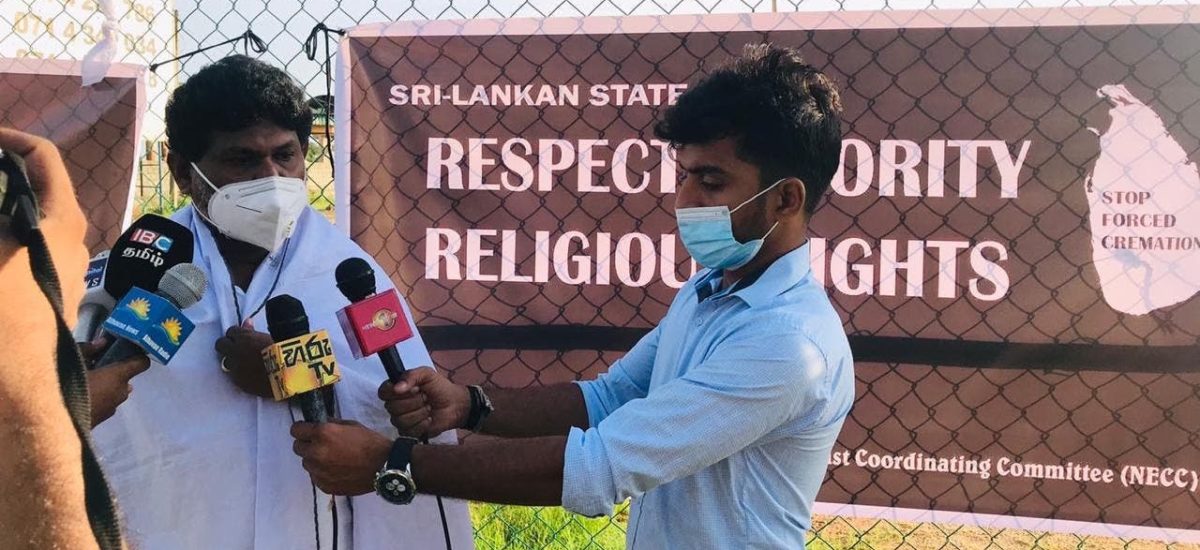Photo courtesy of Al Arabiya
The global spread of COVID-19 has been accompanied by a deeply troubling rise of stigma. Stigma related to COVID-19 included stereotyping, blaming and ostracizing groups or individuals that were infected or associated with the disease. This pattern of stigmatization has been fueled by political rhetoric, inequity, and mistrust. Many of these stem from legacies of colonial relations and historical conflicts. Stigma related to COVID-19 was recognized early in the pandemic, discussed in the media, and many global and country level efforts were made to address the problem. However, the need for sustained collective action remains unfulfilled in the global pandemic agenda.
The long-term threat of stigma related to COVID-19 is two-fold: at the country level, directed towards specific communities, and at the inter-country level, is directed towards countries and regions struggling to control COVID-19.
Within countries stigma has taken various forms. The world has witnessed violence and discrimination against people of Chinese origin in HICs, minorities in South Asia, and even frontline workers in different countries. Early in the pandemic much of the stigma was directed at Asian minority populations in non-Asian countries, exemplified most dramatically by use of ‘China virus’ for COVID-19 as a derogatory term in America and other countries. This politically oriented stigmatizing rhetoric continues to have consequences for Asian minority communities who have experienced a rise in hate crimes since the outset of the pandemic.
Stigmatizing rhetoric has been amplified and spread by political leaders of majoritarian communities, and at times even fueled by government policies. Research suggests that previously marginalized groups in India are being assigned blame for the spread of COVID-19, although in reality these sub-groups did not have higher rates of infection compared to other groups. Examples indicate that stigma is assigned based on religious, class and other social divisions often impacting the vulnerable the most. Additionally, analysis suggests that COVID-19 stigma and discrimination have a clear impact on reducing access to healthcare and discouraging help seeking behavior resulting in poorer health outcomes especially for minority communities.
At the inter-country level, stigma related to COVID-19 was perpetuated initially by variant naming conventions. The negative implications of naming variants after countries were so serious that calls to revise the terminology reached the World Health Organization (WHO) and were rectified using a more neutral nomenclature. Despite this important de-stigmatizing action by the WHO, growing vaccine inequity risks perpetuating and deepening pandemic stigma, with major implications for global health security and the economic and social lives of those in poorer countries. Vaccine inequity continues to push the burden of the pandemic disproportionally towards LMICs resulting in restrictive measures such as travel bans marking these countries as risky destinations. The perception of safety and risk, often perpetuated by media, has been shown to outlast the actual conditions. The negative economic impact of previous epidemics on LMICs was significant and continued even after the countries were declared safe destinations for travel and trade. Such setbacks for countries create hardships specifically for communities belonging to lower income quintiles and as evidence suggests impact women more. The economic consequences of long term stigma are exacerbated for countries where tourism is a significant part of their economy and also affect families that depend on income earned as migrant workers (e.g. domestic and construction workers). These individuals are particularly vulnerable, already facing high level of scrutiny when traveling to and living in HICs. For example, migrant workers form South Asia who work in Gulf countries face “othering” (setting groups or individuals apart by attributing negative assumptions or characteristics) in their home countries as well as the countries they work in, resulting in a cycle of stigma and high-risk exposure to infection due to being marginalized and stranded in unsafe conditions. Additionally, the idea of establishing vaccine passports is being considered despite being criticized for their marginalizing impact. These passports will certainly disadvantage vulnerable groups in the absence of vaccine equity.
The fear that comes with a pandemic feeds perception that are often not real. The longer the pandemic remains, the longer perceptions of risk will perpetuate. If we continue down the current path globally, we risk an extensive list of long-term negative implications. The stigma that results from cycles of containment and ‘protection’ manifests as profiling, impacts mobility, income, access to educational opportunities, discourages help seeking behavior, and deepens the feeling of fear and instability due to physical and other threats.
Stigma related to COVID-19 is hampering community kinship, and deepening divisions within and between countries. This will ultimately lead to a more unstable and fractious global reality with troubling implications for achieving collective solidarity. Additionally, action against stigma will also be ensure that we as a community adhere to global human rights standards. It is vital that we further prioritize addressing stigma in policy agendas for the pandemic response, while minimizing the inequities that fuel stigma. A stronger global level action plan focused on building public awareness and increasing political will to address stigma is required. Delaying a concerted global level action plan to counter stigma will prove to be a major misstep in our pandemic response.
Shashika Bandara is a doctoral student focusing on global health governance and policy at McGill University. He is formerly a policy associate at the Center for Policy Impact in Global Health at the Duke Global Health Institute.
Raphael Lencucha is an Associate Professor in the Faculty of Medicine and Health Sciences at McGill University. He works on cross-cutting issues with an emphasis on governance for health and global health policy.
This commentary first appeared in BMJ Global Health Blog and can be accessed here. Published under CC BY NC SA.


